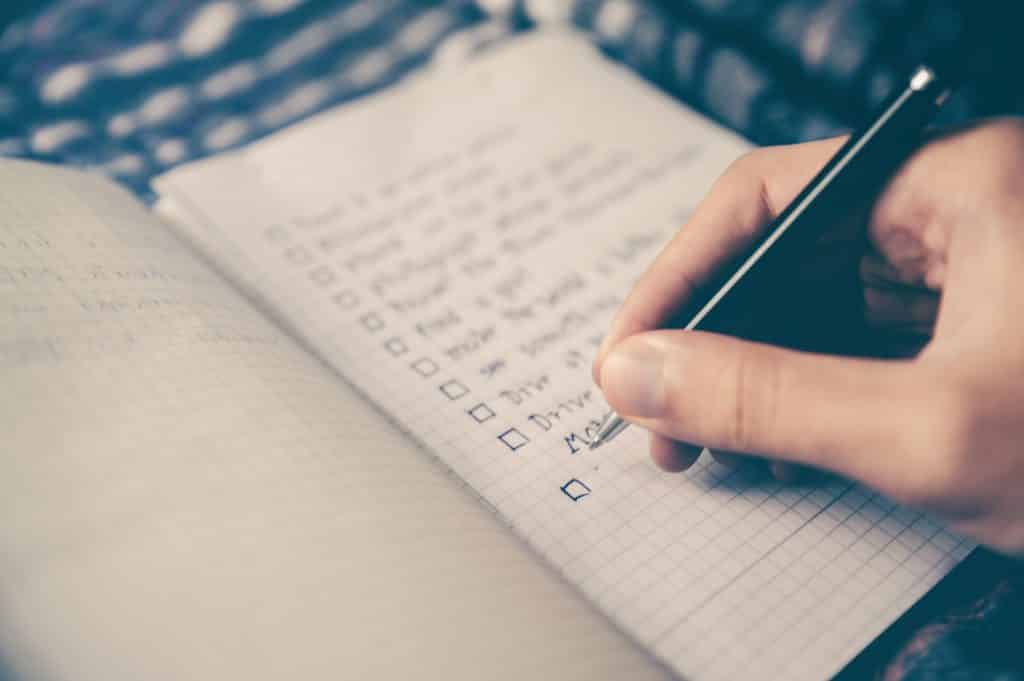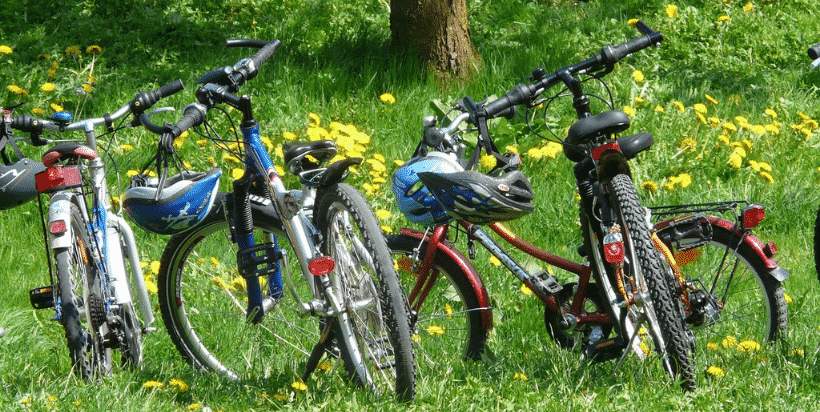If you have a motorhome or a towable and you’ve selected your first destination, you’re officially ready to pack up for some serious fun. The biggest challenge when camping for the first time is deciding what to pack without overloading your RV with unnecessary items and camping gear you may not use.
RVs give you the freedom to bring a lot more than you could when car camping. But you need to be careful not to exceed your camper’s weight ratings. Follow these RV packing tips to save space, time, and stress when you pack for your first camping trip.
First Things First – Gear Testing and Preparation

Before you randomly start loading things into your RV, play around with your gear in the backyard. Get comfortable with pitching your tent, explore the features of your camping cooler, and test out a meal or two on your portable grill.
By testing out your gear in your own backyard before reaching the campsite, you can maximize setup time when you arrive. Who doesn’t love saving time? Especially when there is plenty of adventure ahead on your RV trip.
During this phase, consider how your gear will fit into RV storage compartments. Loading smaller gear into storage bins or containers saves space and keeps your gear organized so you don’t have loose items moving around when you’re in transit.
Outfit Your RV With The Basics

The easiest, and most convenient, RV packing tip is to keep your basics stored in your RV year-round, or at least throughout the camping season. Whether you’re traveling close to home or heading across the country, it’s a good idea to regularly keep your RV stocked with the basics.
Of course, you’ll need to wash everything thoroughly between uses and allow them to dry completely before storing them in your RV. Start with the basics for your RV, regardless of where you’re traveling, such as:
- Bedding: sleeping bags and sleeping pads, sheets & blankets, pillows.
- Camp kitchen essentials: basic pots & pans, can opener, colander.
- Other kitchenware: plates, bowls, cutlery, cups, trash bags, dish soap, sponges, dish towels, napkins or paper towels, and a lighter for the grill/campfire/propane oven.
- Bathroom: toilet paper, toiletries, towels.
- Health supplies: first aid kit, hand sanitizer, sunscreen, bug spray, and any other personal medications needed.
- Power source: a generator, fuel, propane, surge protector, RV extension cords (30 or 50 amp rated for your RV).
- Fresh water: potable water hose, water pressure regulator, inline or whole RV water filter, water storage containers (if dispersed camping without running water).
- Sewer: sewer hose, sewer hose support, elbow connectors, bayonet fittings, tank treatments.
Make a List and Check it Twice

For the remainder of your packing, make a list based on three main RV gear categories: meals, clothing, and recreation. Lists are incredibly useful when packing for your first trip, but even full-time RVers use them as regular reminders.
Consider your destination to determine what the campground accommodations will provide and what you’ll need to bring. Write a list of the items you need for that particular trip. Over time, you’ll find this process easier and will know exactly what you need for your family RV adventures. In the meantime, feel free to check out this checklist.
Plan Your Meals to Save Money and Space

Pantry and refrigerated space are limited in most RVs. Follow these tips for easy meal planning for your next camping trip. When it comes to cooking meals while camping, the simpler, the better.
Once you’ve created your daily menus, make a list of the ingredients and groceries you’ll need. This will save you space and money, while also helping you reduce waste.
The hard part is actually sticking to the list when you make the grocery trip. So grab a snack or meal before you go. Grocery shopping on a full stomach always makes it easier to follow the list without impulse buys getting in the way.
Stick With Simple Clothing Options

Consider where you’re going and what activities you’ll enjoy while you’re there. Nothing ruins a good trip to the lake than forgetting the swimsuits. For spring and summer trips, pack one lightweight jacket per person and supplement it with clothing that can be layered in case of cooler weather in the evening.
Choose comfortable items that can be mixed and matched to create longevity from a limited wardrobe. For longer trips, don’t forget that many campgrounds have laundry facilities. Booking a stay in one of these campgrounds will reduce the amount of clothing you need to pack. If you’re taking advantage of this option, be sure to bring a laundry bag and detergent.
Don’t Forget Outdoor Toys and Gear

One of the advantages of traveling by RV, especially with a toy hauler, is that you can bring your toys. Don’t forget to bring along your bikes (and locks), kayaks, ATVs, and games for indoor and outdoor use.
You’ll also want a few camp chairs, flashlights, and maybe even a portable fire pit for a few cozy camping drinks after sunset. But before you go overboard and bring everything you own, consider how long you’ll be gone, how much available time you’ll have to use specific items, and how much storage space your RV offers.
Organize by Usage

Let’s face it, no one wants to arrive at the campground and immediately unpack everything when setting up camp. So organize your camping items into groups during the packing phase — such as kitchen supplies, bathroom items, and outdoor items.
When you’re loading the RV, store the items close to where you’ll use them. For example, toiletries should be stored in the bathroom and sewer accessories should go in the compartment closest to your RV’s dump outlet. Store items you’ll use outdoors (campfire roasting sticks, extension cords, and lanterns) in your basement storage or tow vehicle for quick and easy access when you’re ready for them.
Furthermore, consider how much you’ll use certain items. After organizing by use, pack your RV with the least-used items first and finish with your most-used gear. That way, you’re not constantly moving less-used supplies to get to what you need.
First Camping Trip Essentials
When done correctly, packing for your first camping trip doesn’t need to be stressful. Like anything else, a little planning ahead of time pays off once you reach the campground.
Check out some other tips on what to pack for camping:
- Camping World Summer Must-Haves
- How to Stay Cool While Camping in the Heat
- The Coolest & Craziest Things Real Campers Have Seen While Camping
- How to Repel Bugs When Camping
- Thanksgiving Camping Packing List
- How to Pack a Toy Hauler with Flammables Safely
How do you prepare for your camping trip? Leave a comment below!










I am a tent camper. At 67 it has become more challenging, so I do camp near my vehicle. I don’t require electricity or running water at my site, but a tap within walking distance is wonderful. Pit toilets are fine, but the clivus multrum is exceptional. A shower is deluxe, but hiking or driving to it is okay. Washing machines aren’t necessary. It makes me sad to have to camp next to an RV with its AC humming in the night, the blue light of the computer lighting the dark. Is this really camping? I like the quiet and the dark. I come to get away from technology, smell and hike the woods, and breathe deeply the air. I wish State Parks would distance tent and RV campers. I wish they would provide a place where campers can be loud and sing and meet other campers at night. As far as packing, I keep most equipment packed and with a checklist so I don’t forget anything. I freeze food in advance and eat it as it thaws in the cooler. I can leave within the hour.
When stocking the kitchen don’t go cheap. If you are used to good knives for example, and then buy some cheap one, you will be disappointed every time you use them. Same wth appliances as electric fry pan, furnish the kitchen with the same quality you have at home. This is your home on wheels, not some homeless setup.